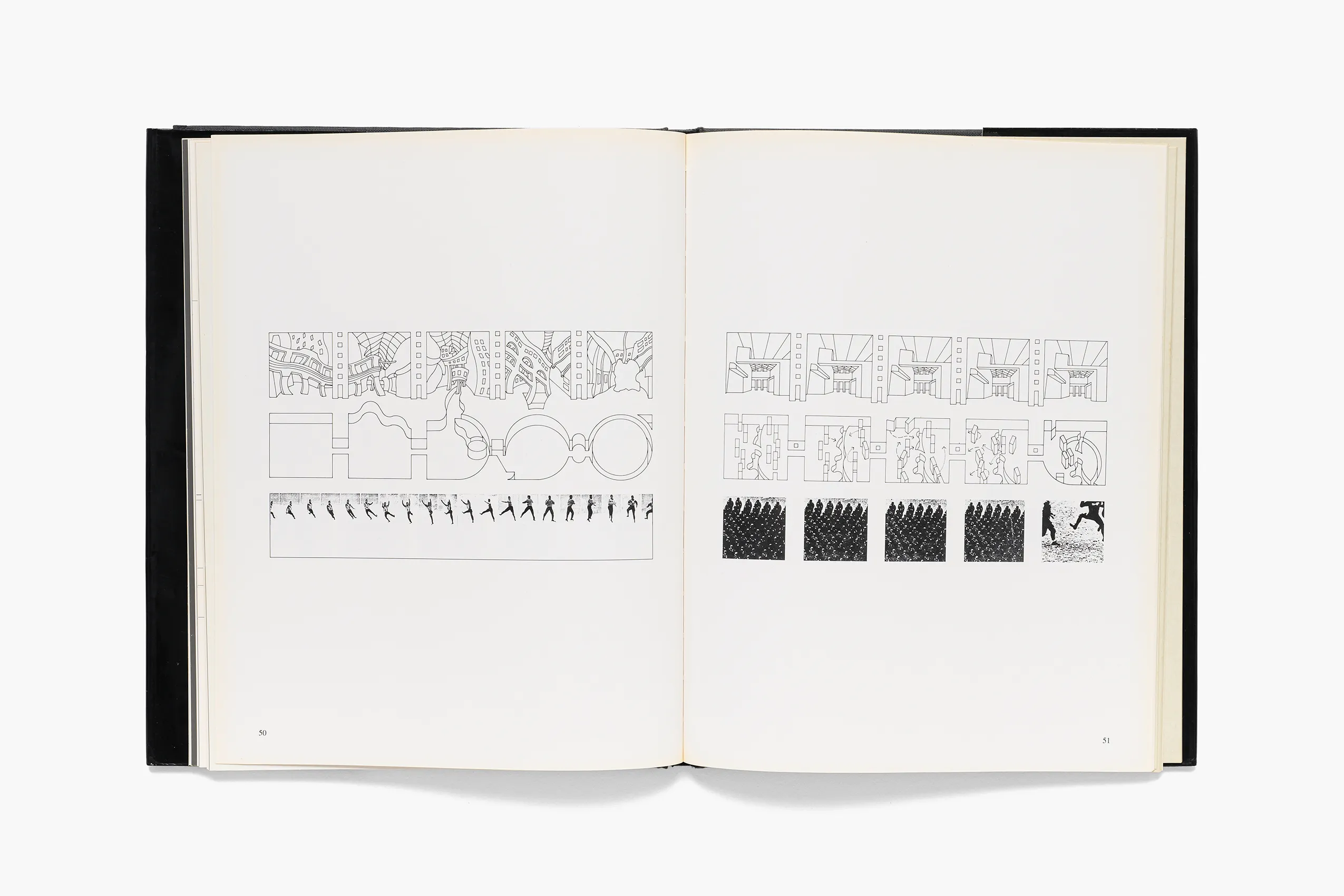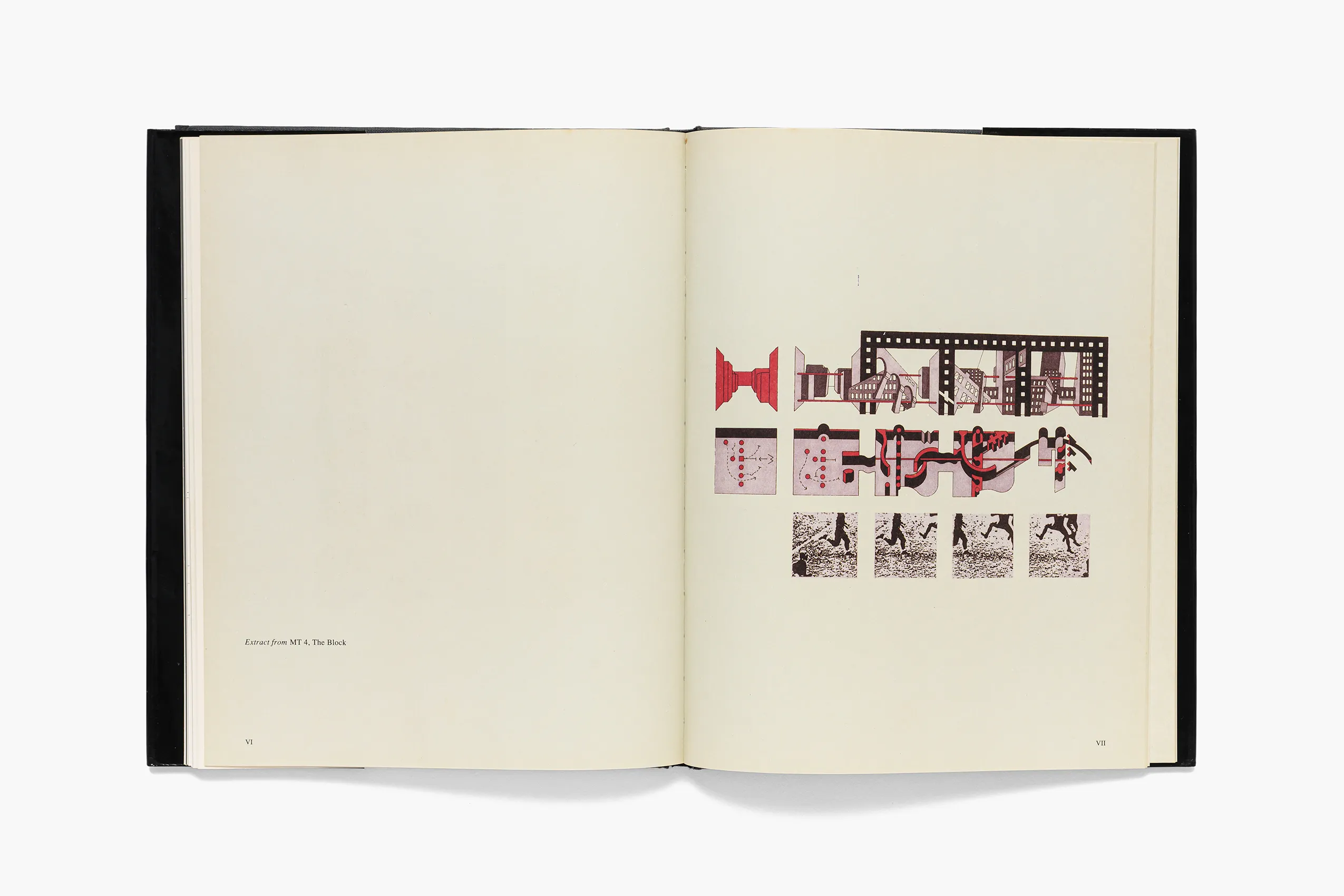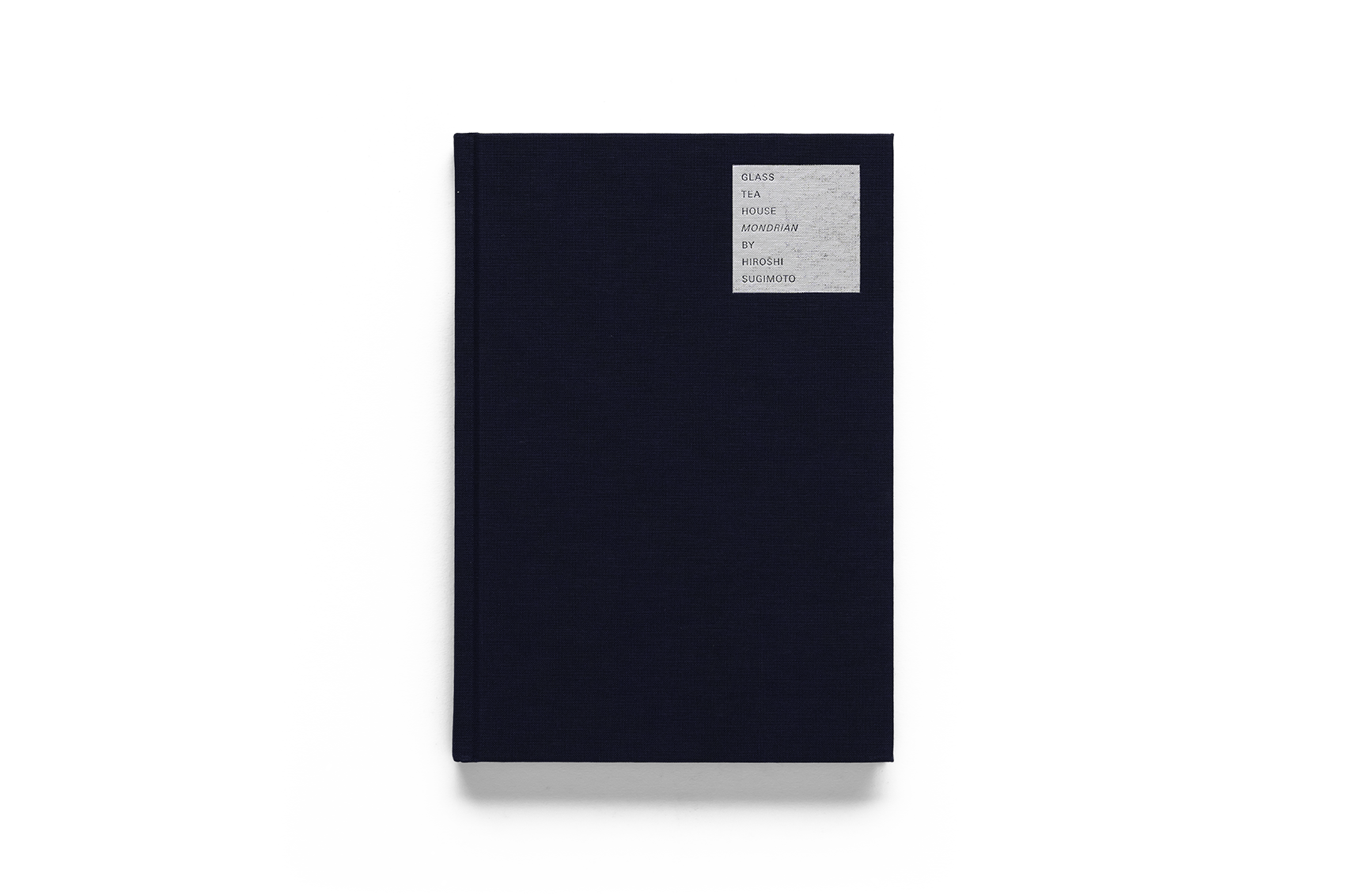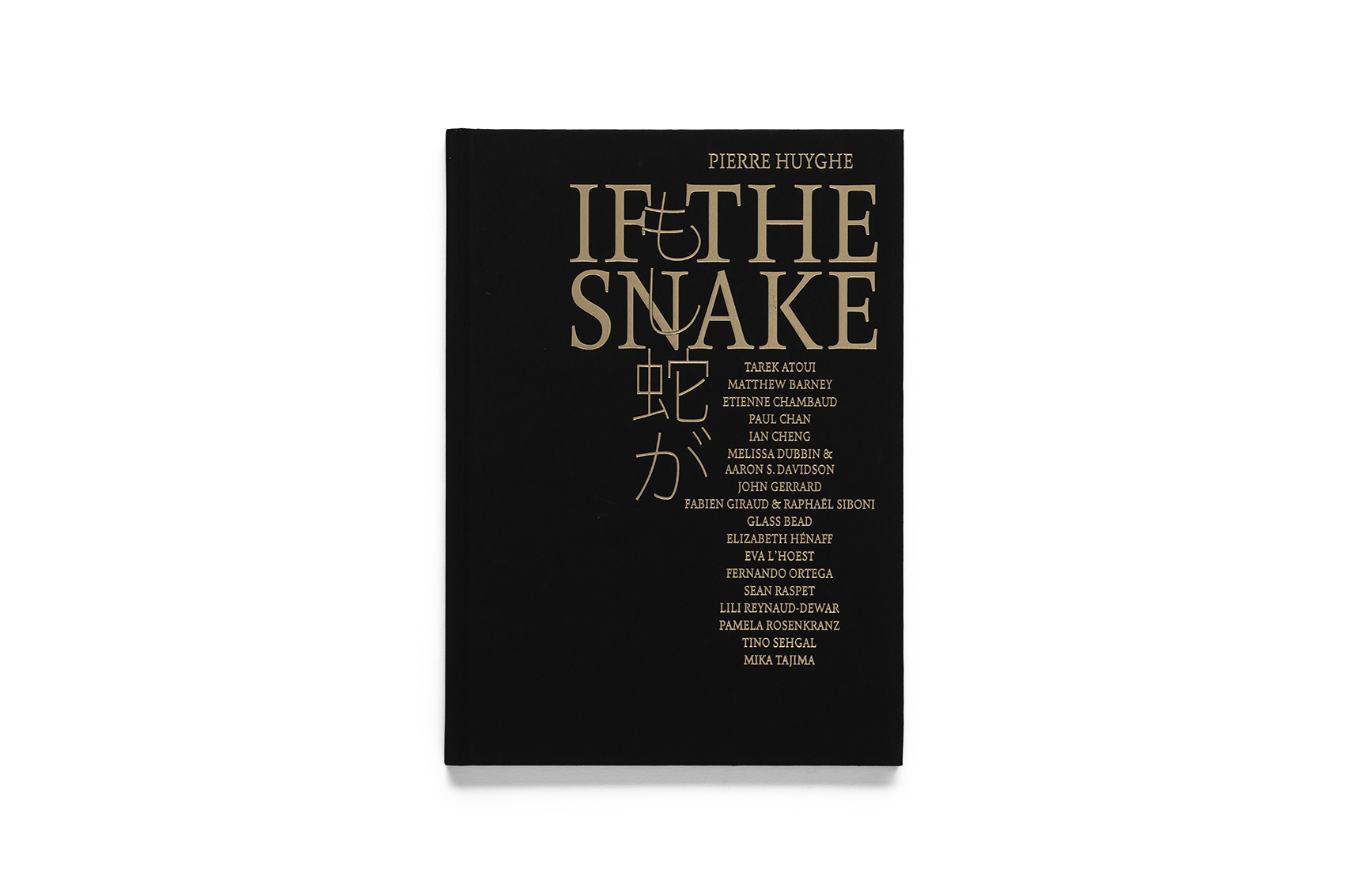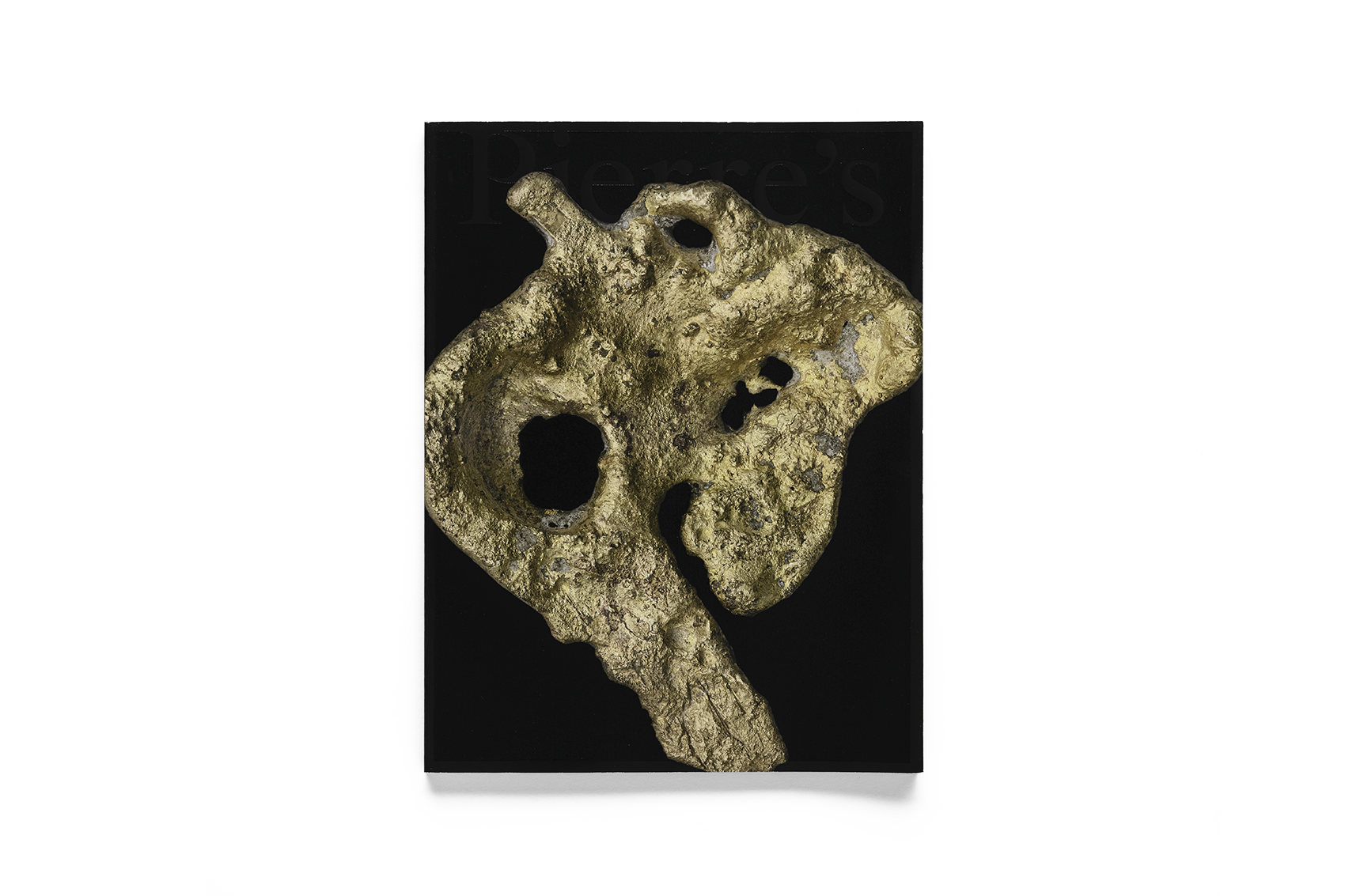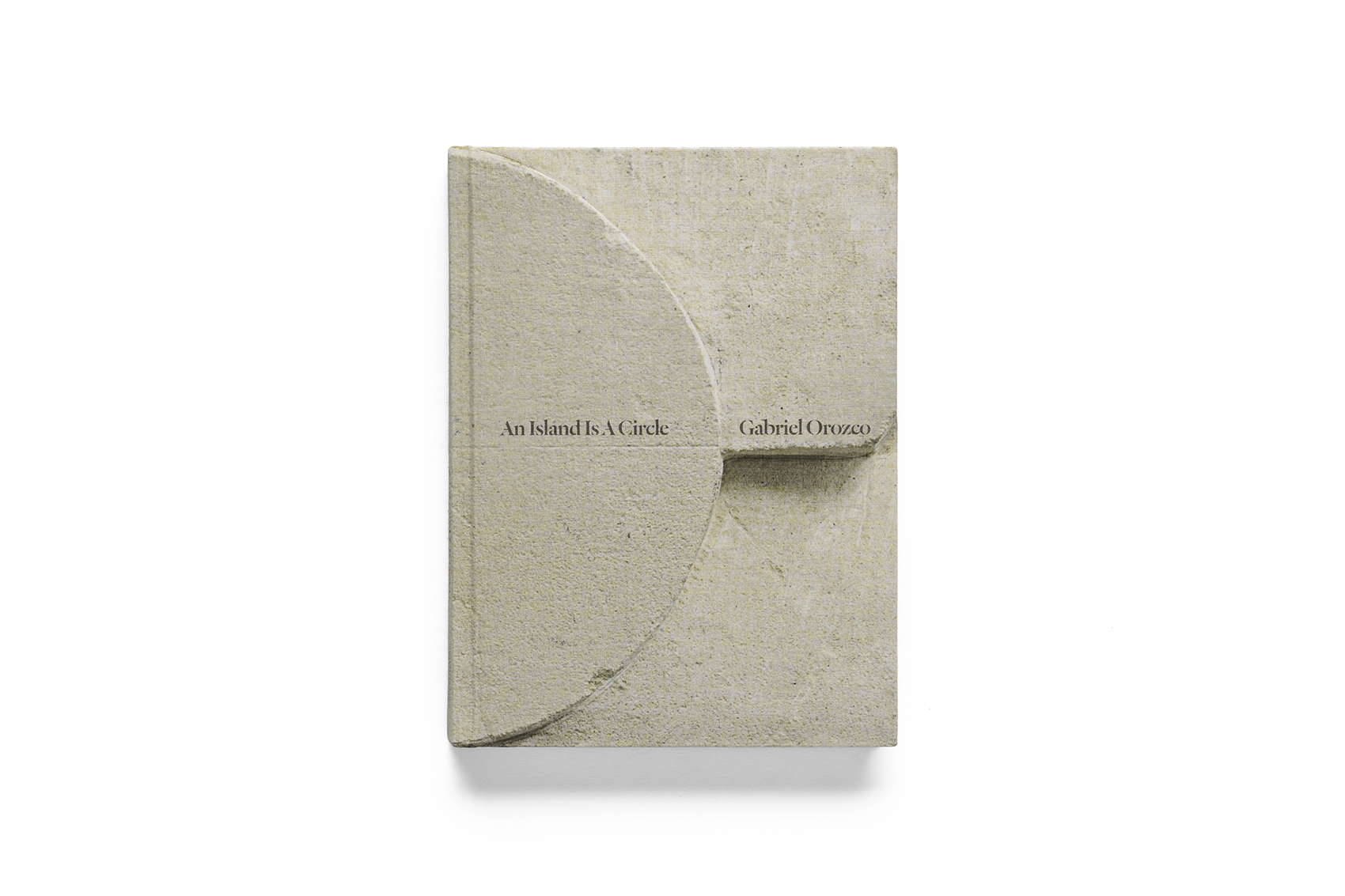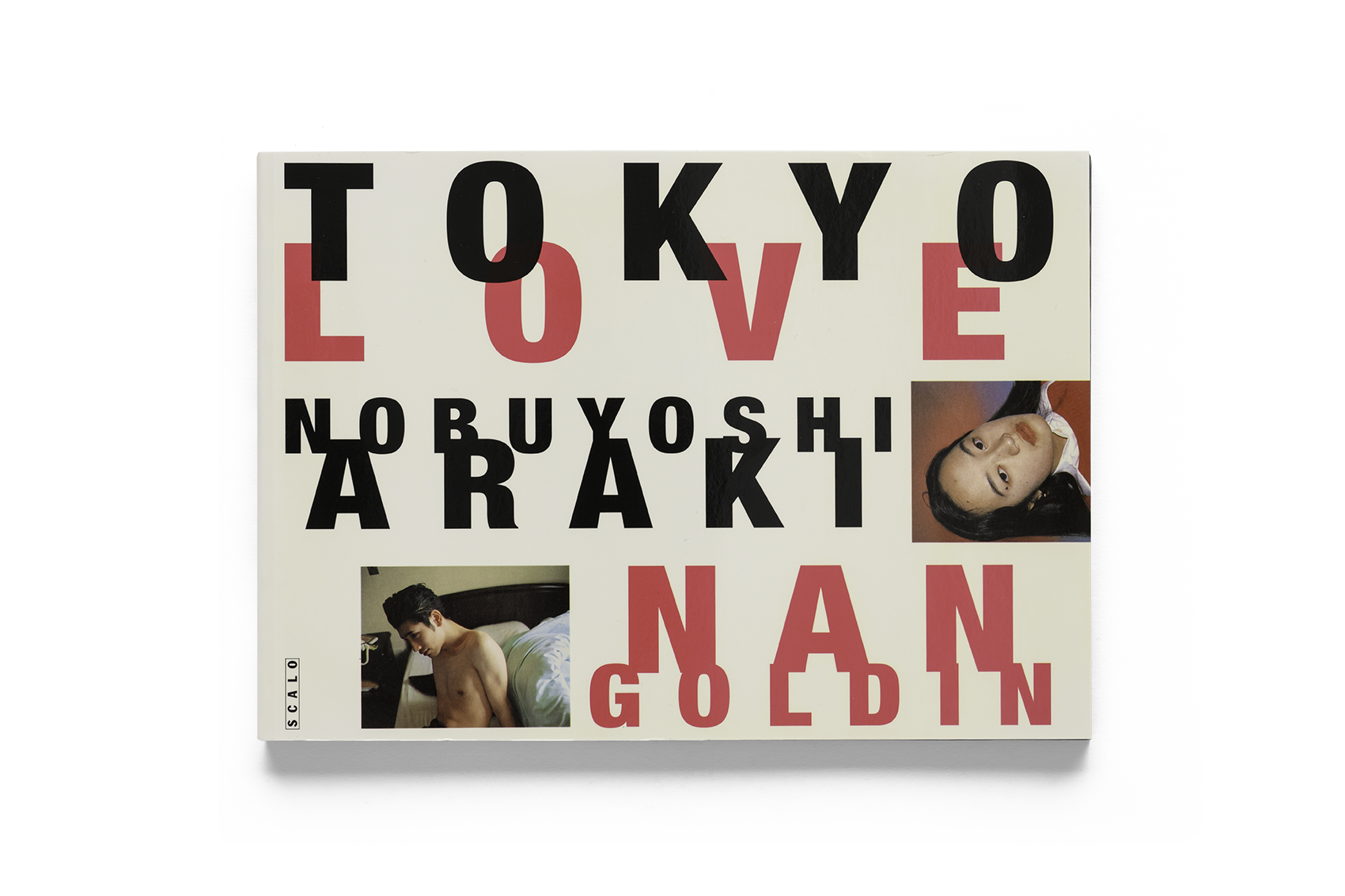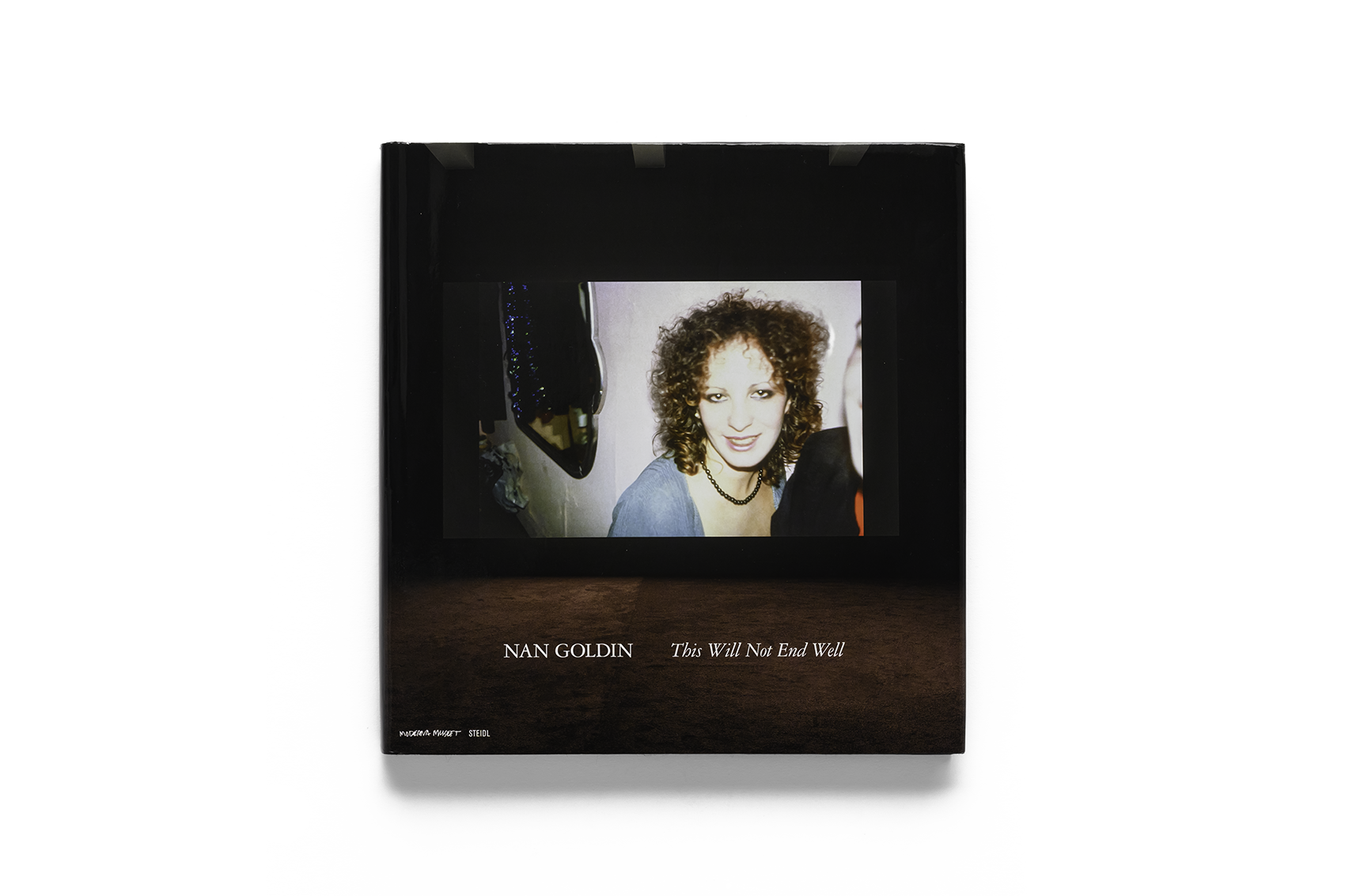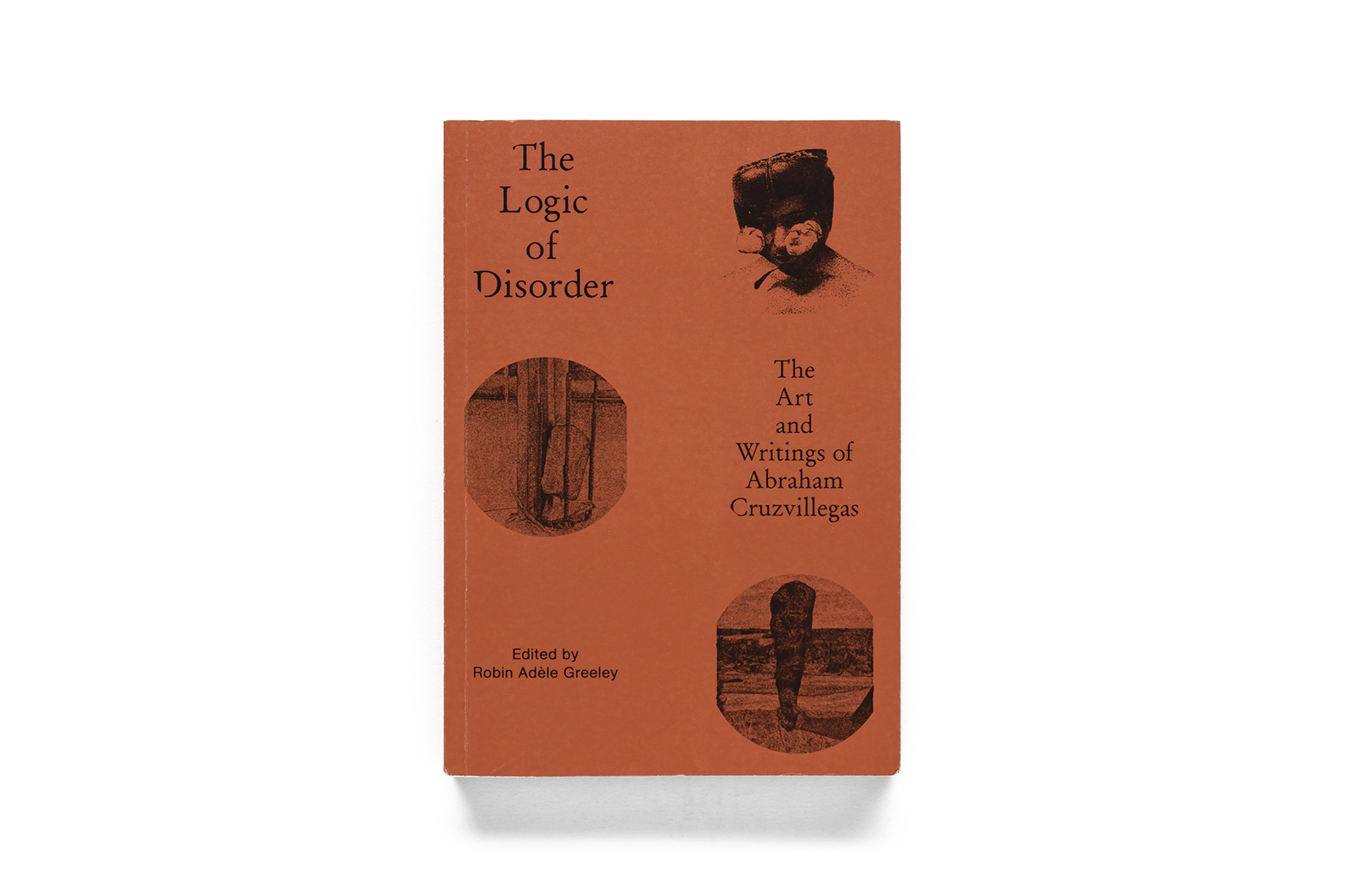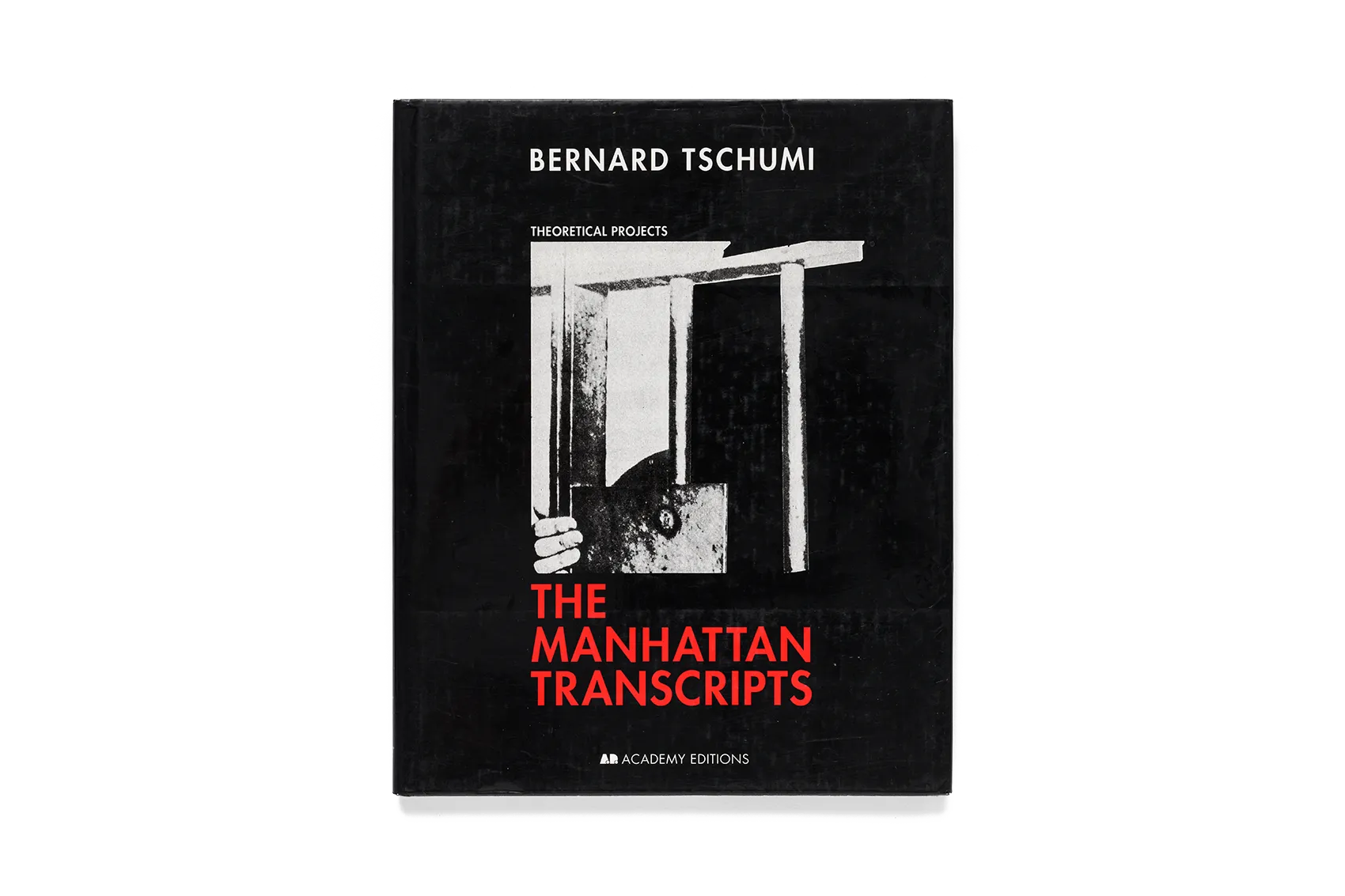
Wiley, 1994
Bernard Tschumi: The Manhattan Transcripts
Bernard Tschumi: The Manhattan Transcripts

Wiley, 1994
“They found the Transcripts by accident... a lifetime's worth of urban pleasures that they had no intention of giving up. So when she threatened to run and tell the authorities, they had no alternative but to stop her. And that's when the second accident occurred... the accident of murder...”
Bernard Tschumi: The Manhattan Transcripts are a series of theoretical drawings created between 1976 and 1981 by the Swiss/French architect and educator Bernard Tschumi, 1944. Through architectural drawings, it transcribes imagined events that take place in a real New York location, exploring three overlapping, conversational, and contradictory levels of architectural space, human movement, and events that form the basis of Notation as a creative method. The collection is part of the 1994 special architectural exhibition “Beginning/Bernard Tschumi: Architecture and Event” at the New York Museum of Modern Art (MoMA), accompanied by a revised edition of the collection at the Architectural Union Academy (AA) in London. An excerpt of the keynote lecture, accompanied by a colored graphic version.
Swiss/French architect and architectural educator Bernard Tschumi (1944-), who created “Manhattan Replica” from 1976 to 1981 (The Manhattan TranscriptsThis series of exhibitions, through architectural drawings, transcribes imagined events that take place in real New York locations, exploring three intermingled, conversational, and contradictory levels of architectural space, human movement, and events that form the basis for Chumi's method of creation using Notation.
The narrative begins with an accidental murder, divided into four scenes, and thus forms the four main chapters of the book: The Park — the murder in Central Park, The Street — the sexual and violent events experienced across the boundaries of 42nd Street, the Tower — — The Fall from the Manhattan Skyscraper, and “Streetscape” — events that took place in different atria within the city skyline. Through a setting of different dimensions and functions, Chumi further accommodates the form of various building spaces, high-speed photography of human movements, and snippets of news events on paper, extending along the timeline to provide a unique and three-dimensional “building experience”.
As mentioned in the preface to the book: “Architecture books, unlike publications about architecture, develop their own existence and logic, the purpose of which is not simply to depict buildings and cities, but to find the ideas behind them.” In the “Manhattan Replica” series, Chumi refers to the “Montachi” theory of former Soviet director Sergei Eisenstein and the stage design of László Moholy-Nagy, who had a profound influence on Bauhaus, through an illustration Paper displays a message overlooked by traditional architectural graphics, such as a film film, and the intricate events that occur in space, and represent a remarkable re-imagining of 20th-century urban spaces. Interpretation.
The Manhattan Replica series was first exhibited publicly at Artists Space Gallery in New York in 1978 and first published in the United Kingdom in 1981. An edition of the Art Gallery's bookshop collection was accompanied by an expanded edition of Chumi's 1994 New York Museum of Modern Art (MoMA) exhibition: “Theresholds/Bernard Tschumi: Architecture and Event,” accompanied by an expanded edition of Chumi's special exhibition on the series at the Architectural Association (AA) in London. Excerpt of the seat, accompanied by a color illustration.
